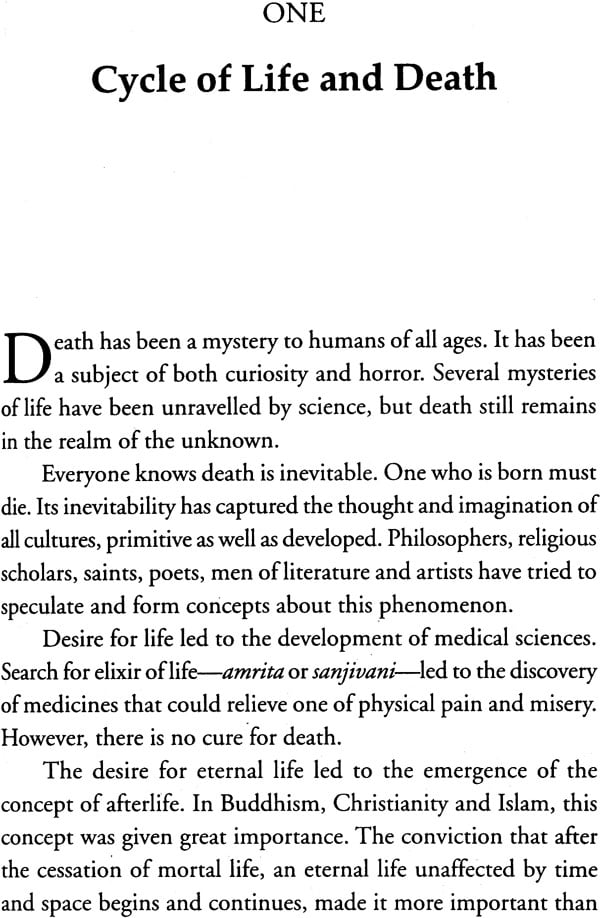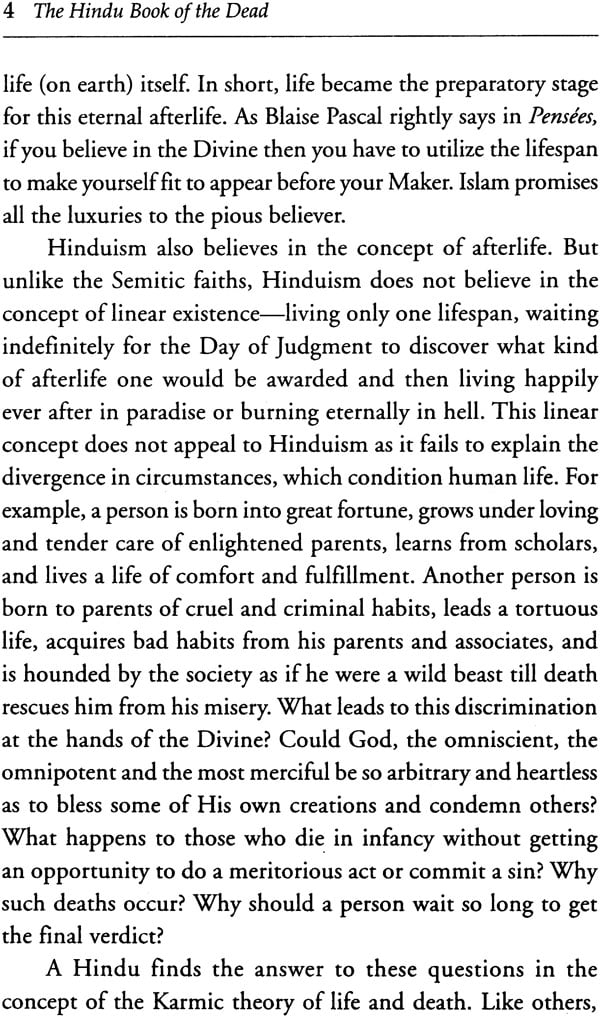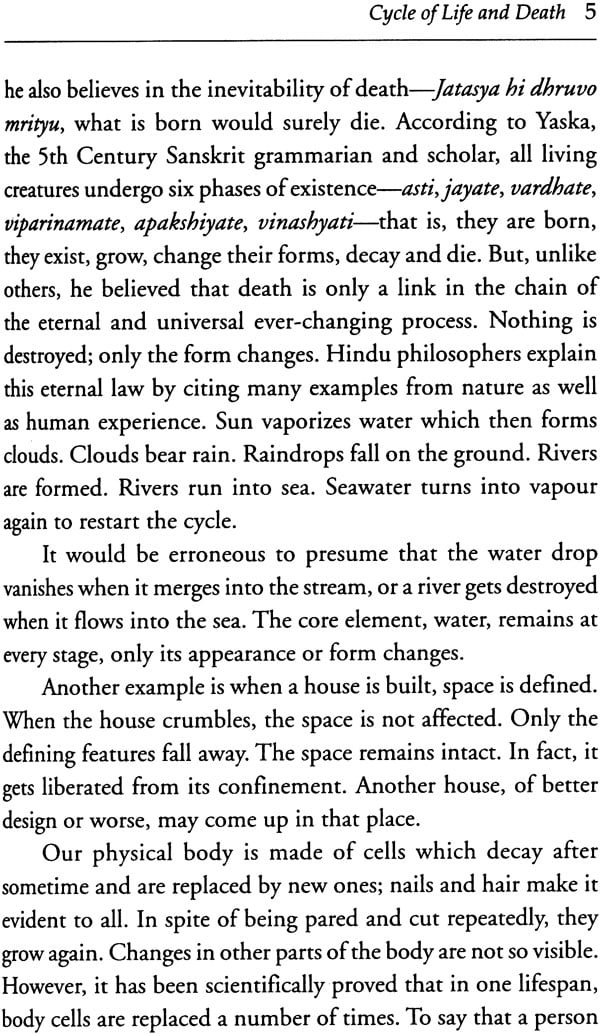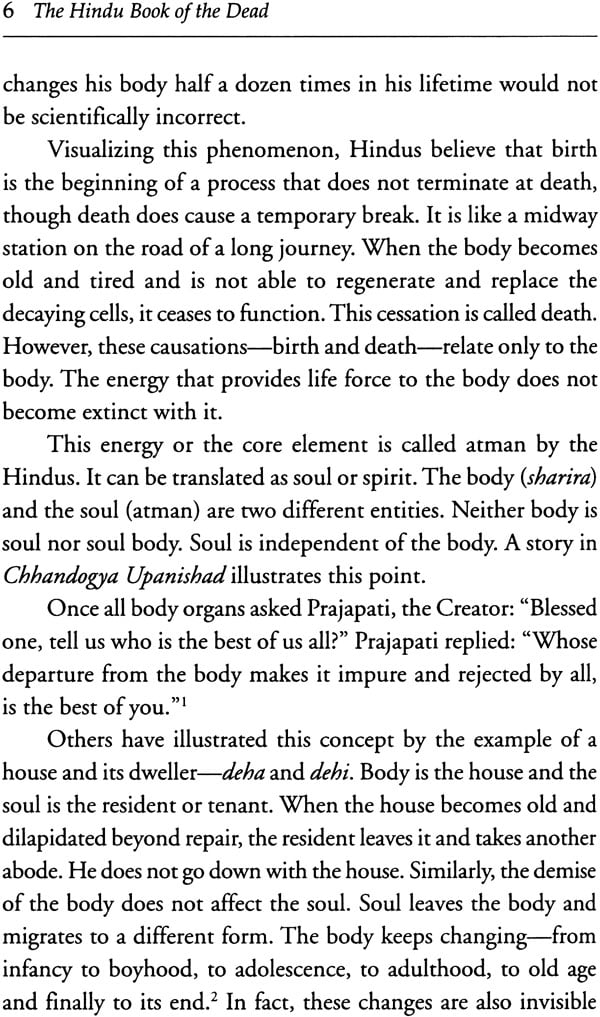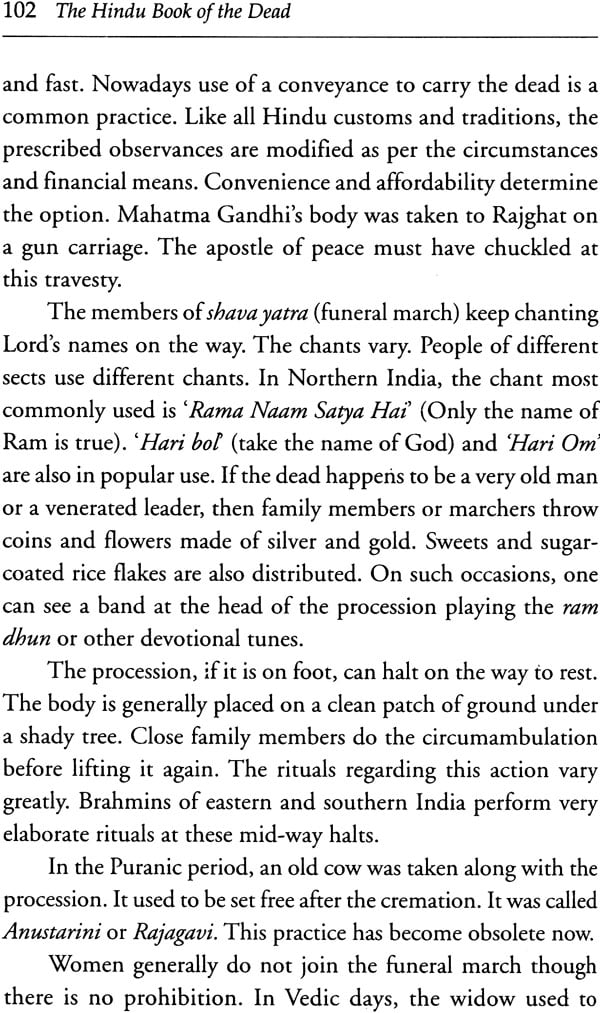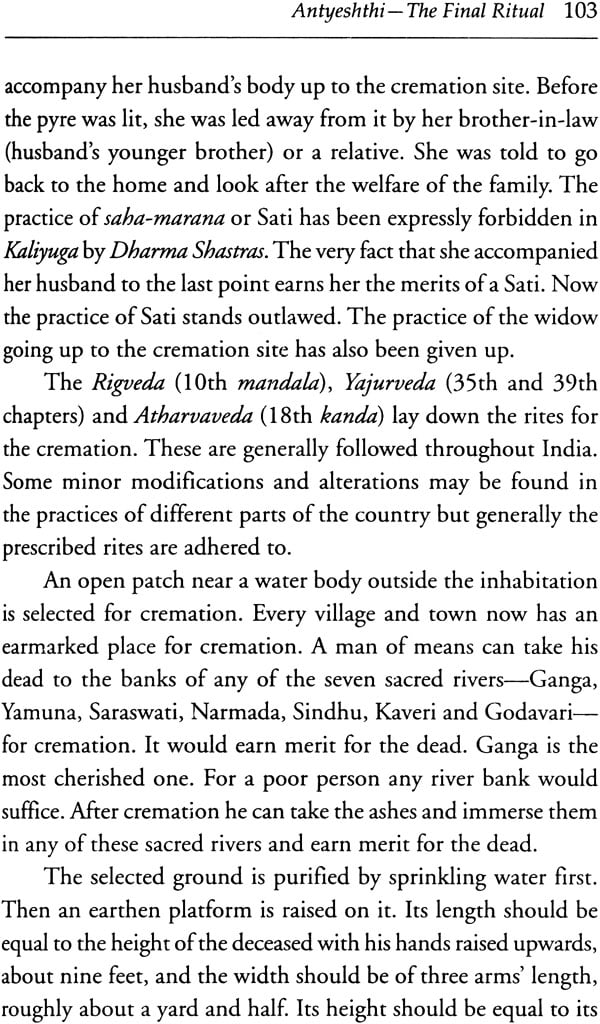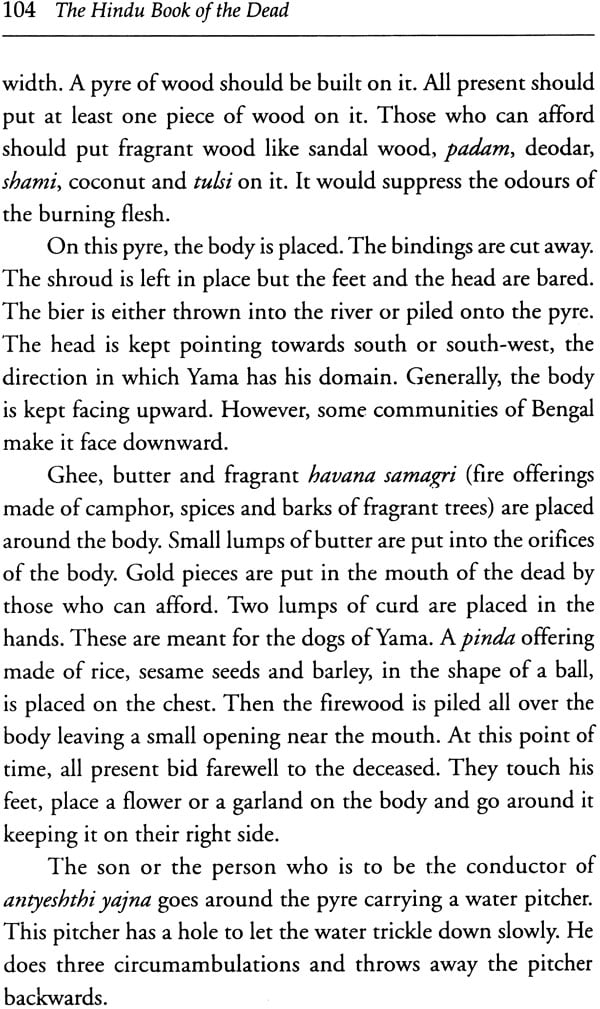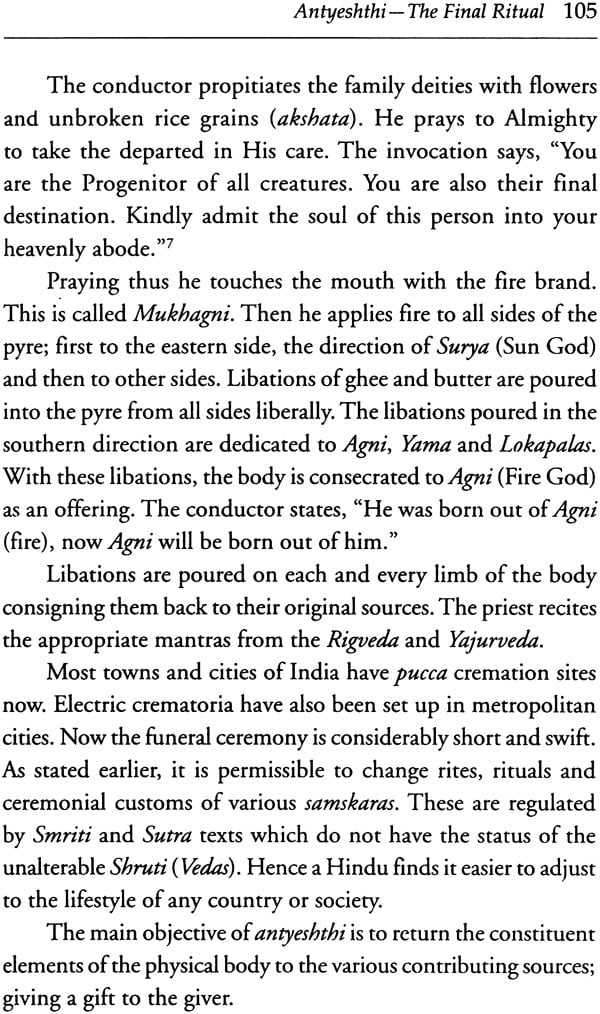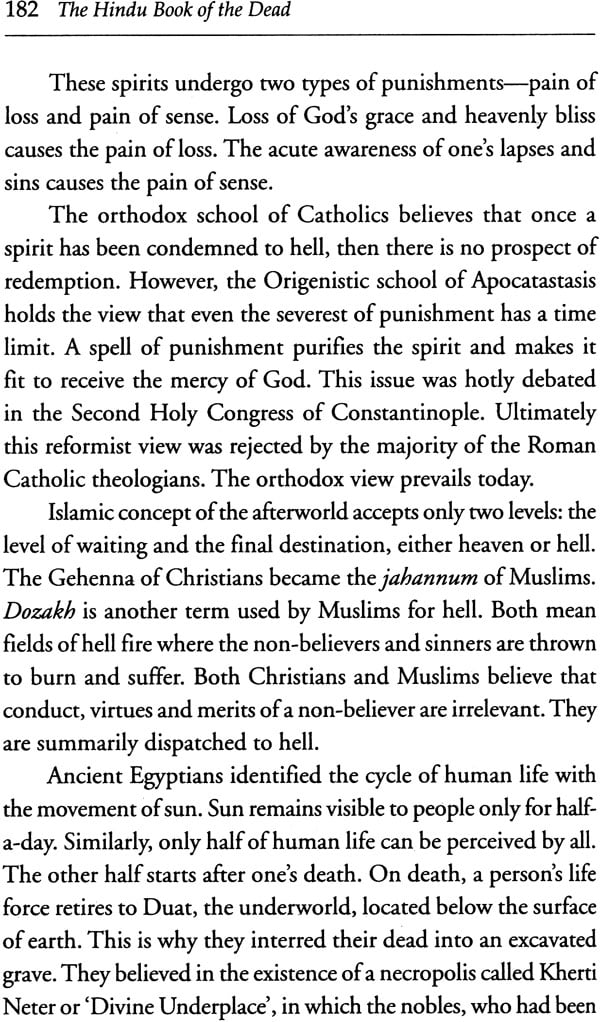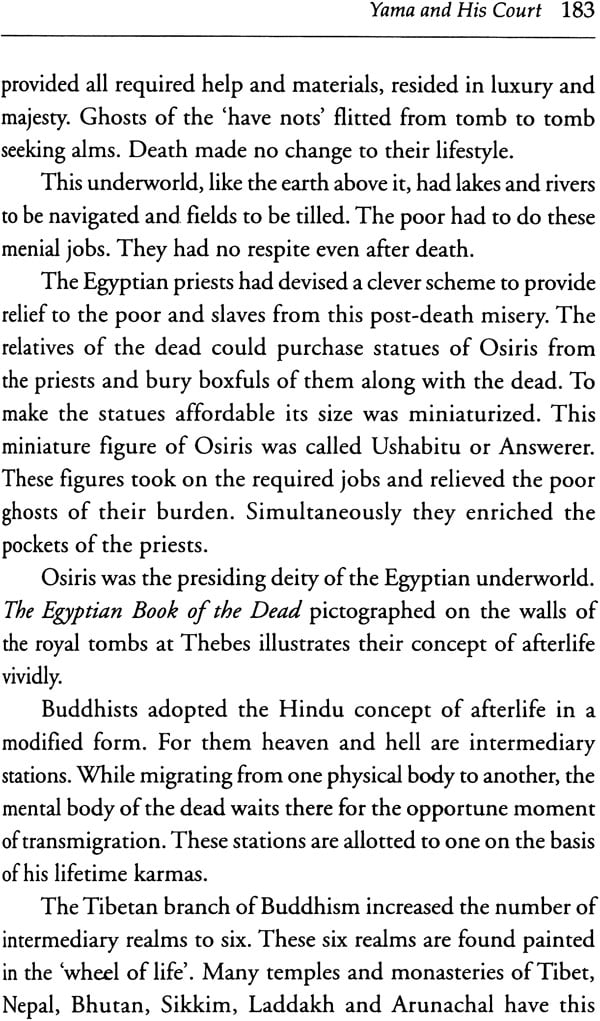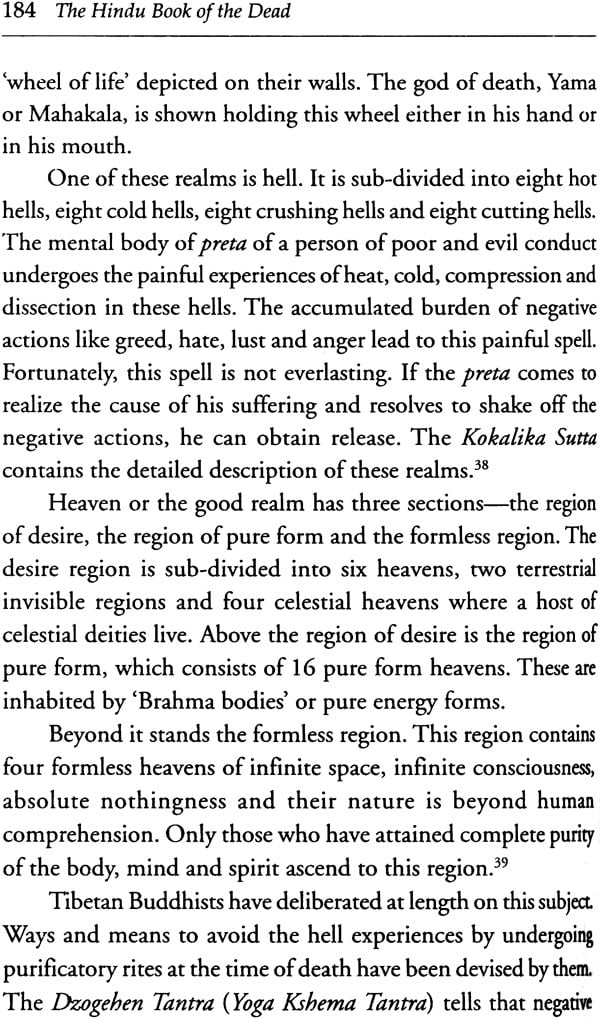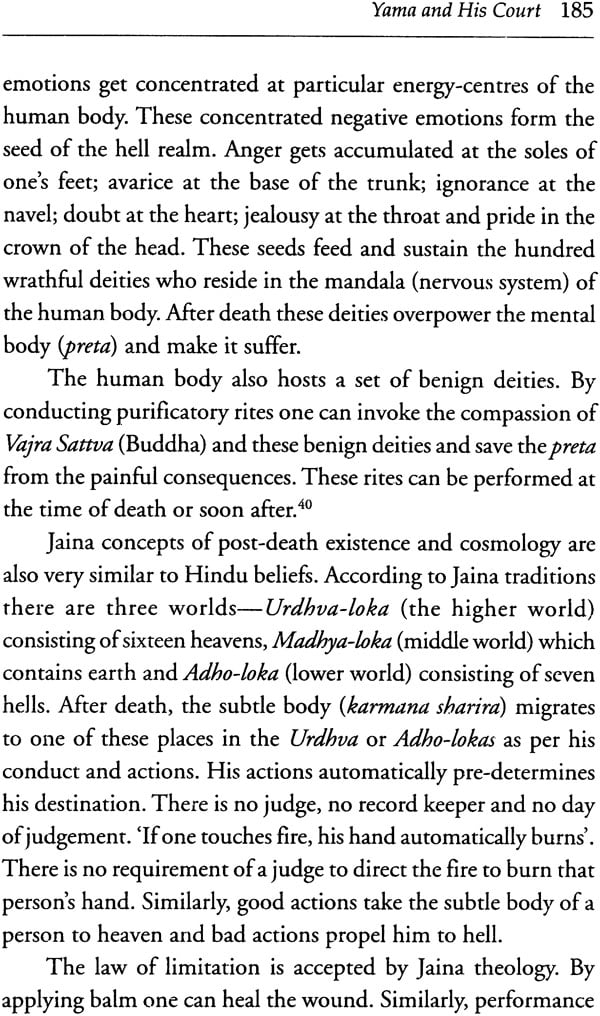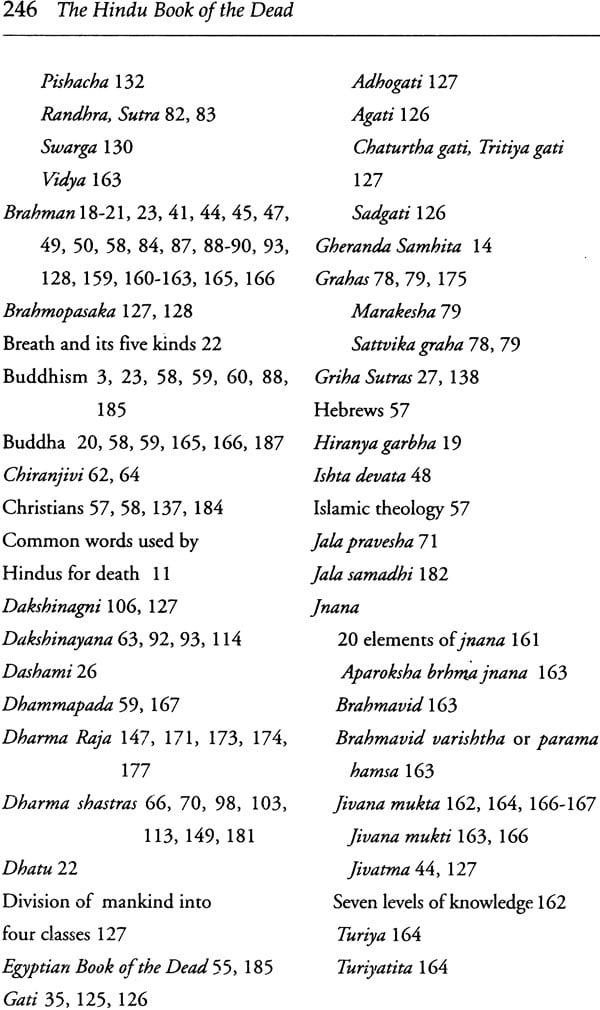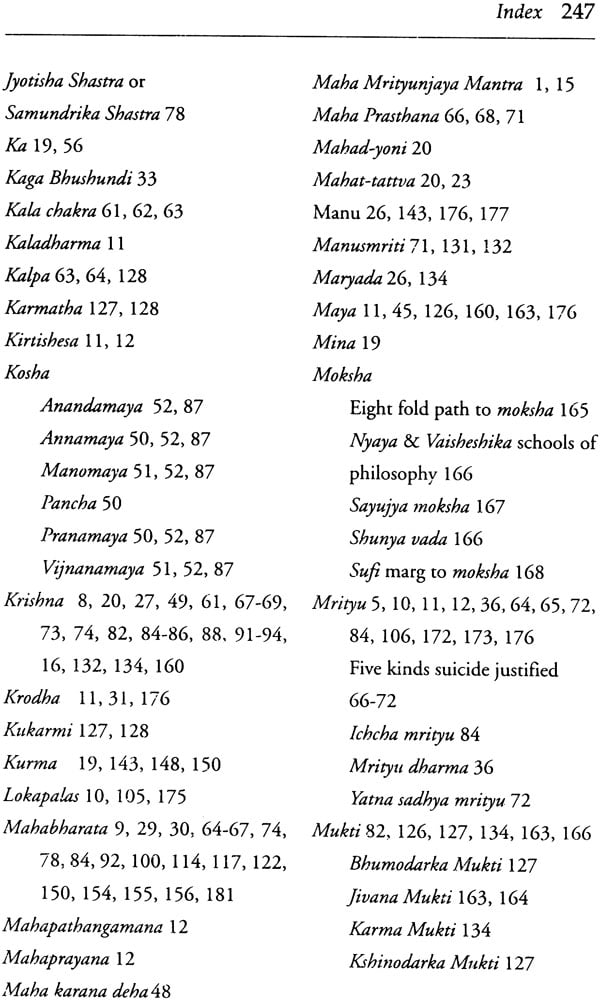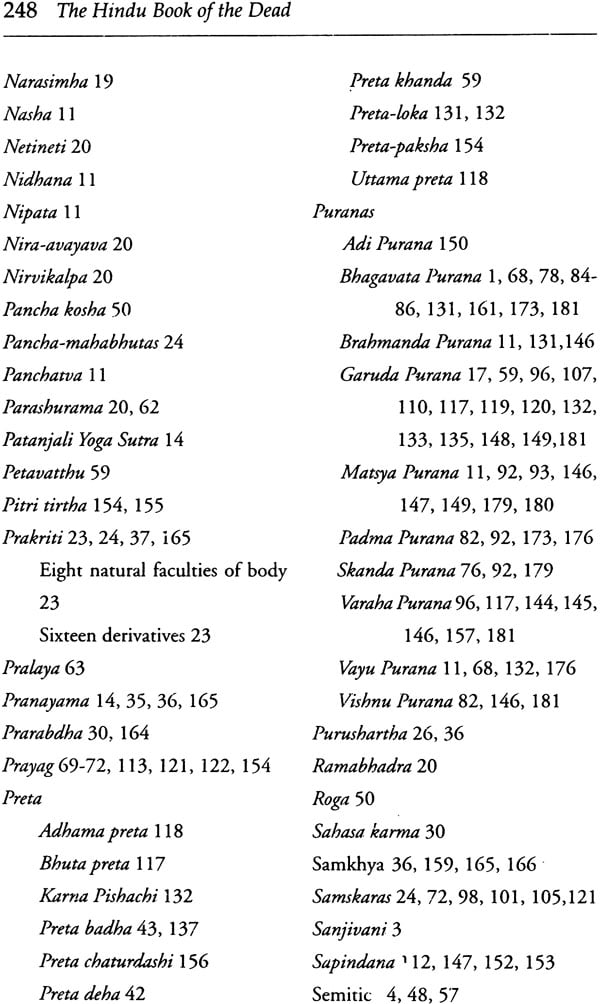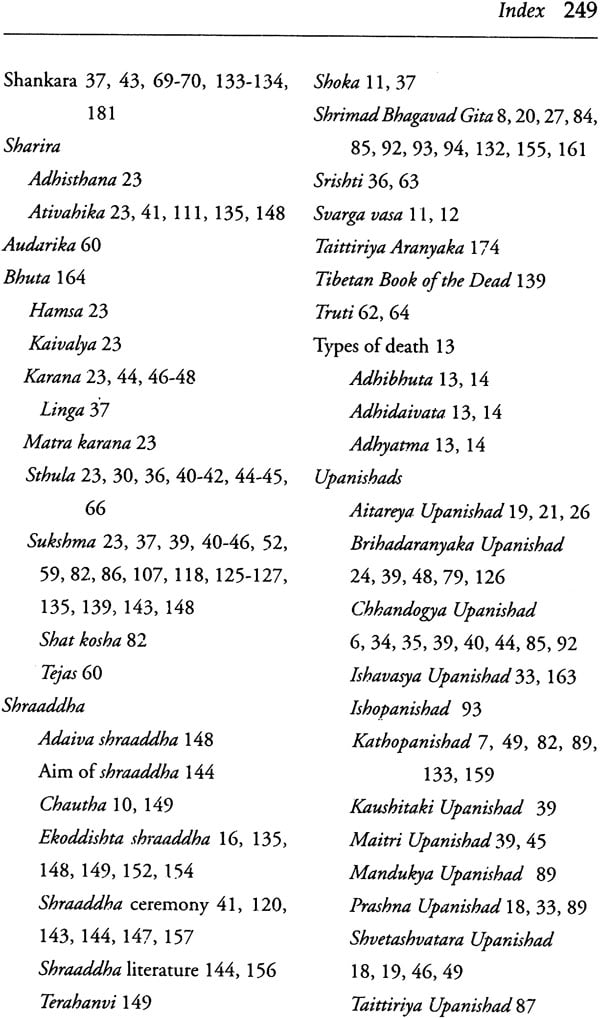
The Hindu Book of The Dead
Book Specification
| Item Code: | NAF354 |
| Author: | Dr. Trinath Mishra |
| Publisher: | Vitasta Publishing Pvt. Ltd. |
| Language: | English |
| Edition: | 2013 |
| ISBN: | 9789380828404 |
| Pages: | 262 |
| Cover: | Paperback |
| Other Details | 8.5 inch x 5.5 inch |
| Weight | 240 gm |
Book Description
The Hindu Book of the Dead discusses all the concepts, beliefs and traditions found in these texts as well as the secular classical works about the death and its meanings critically. The significance of various funeral rites and rituals and their relevance for the soul and for those who are alive have also been explained. What are that ritual and their meanings and how the soul tries to overcome the cycle of life and death?
Highlights
• Death signifies an end to the body journey but the journey of the spirit i.e. atman continues.
• Rituals are meant to propitiate the soul and enable it to begin a new journey without the body.
• There are nine gateways for the atman to leave the body.
• Hindus believe that birth is the beginning of a process that does not terminate at death, though death does cause a temporary break.
• All schools of philosophy accepts that moksha is release from ignorance, sorrow and the life death cycle.
Dr. Trinath Mishra belongs to a family of Brahmins of the Advaita Tradition. He learnt Sanskrit and Studied scriptures from Shri Ramakant Shastri, Dr. Ramdev Tripathi and Shri Soham Maharaj. Dr. Mishra had his formal education at Naterhat School, Jharkhand; Patna College, Bihar and Rohilkhand University, Utter Pradesh. He was awarded the Radhika Devi Gold Medal for his academic accomplishments.
He served in the Indian police service from 1965 to 2002 and was decorated for gallantry as well was distinguished services. Two of his books, Kumbh Gatha and Maulana Jalauddin Rumi have been widely acclaimed.
This book about the dead and the various rituals and ceremonies associated with death is bound to draw immensely from mythology and scriptures. This has necessitated the use of those words that have yet to find a place in the English dictionary. What to do with such words has been difficult choice.
We have chosen to italicize names only when these signify a mythological meaning. In normal places these have been used as names such as Yama and Mrityu. All religious texts, even when they appear in the dictionary, including The Bible and Gita, have been italicized for reasons of consistency.
In text accepted English spellings have been used such as Rigveda. However, in glossary the Hindi pronouncing version has been used such as Rgveda, along with the Devanagri script.
| Acknowledgments | ix | |
| Publisher's Note | xi | |
| 1 | Cycle of Life and Death | 3 |
| 2 | Sharia-The Body that Decays | 17 |
| 3 | Anta-The Final End | 61 |
| 4 | Antyeshthi-The Final Ritual | 97 |
| 5 | Gati - The Journey beyond | 125 |
| 6 | Pitra and Shaaddha | 141 |
| 7 | Moksha-The Liberation | 159 |
| 8 | Yama and His court | 169 |
| Glossary | 187 | |
| Redernces | 235 | |
| Index | 245 |
